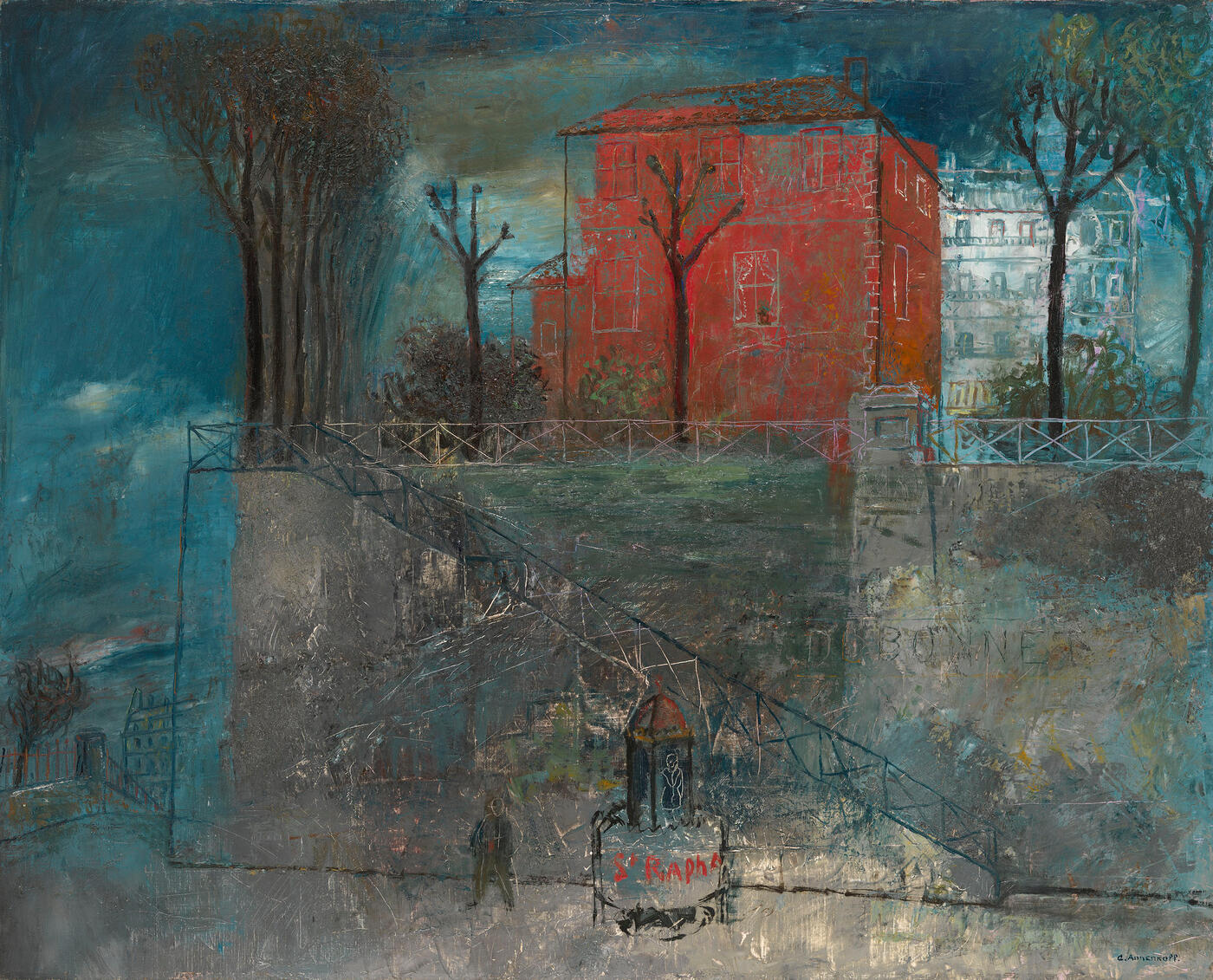MacDougall's Russian Art Auctions 27-30 May 2012
27 May 2012

*§ 37. ANNENKOV, GEORGES (1889-1974)
Maison rose, signed.
Oil and mixed media on canvas, 81.5 by 100 cm.
240,000–400,000 GBP
Painted in the 1920s.
Provenance: Private collection, Europe.
Authenticity certificate from the experts N. Aleksandrova and T. Zelyukina.
Exhibited: Sovremennoe frantsuzskoe iskusstvo, The State Museum of New Western Art, The State Tretyakov Gallery, Moscow, 1928 (label on the reverse).
Literature: Exhibition catalogue, Sovremennoe frantsuzskoe iskusstvo, Moscow, 1928, p. 55, No. 131, listed with incorrect measurements.
Maison rose is a marvellous work which is very characteristic of Georges Annenkov’s early years in Paris. As is the case with most of this artist’s landscapes of the late 1920s, it portrays a very real corner of Paris or the suburbs of Paris. In the process of transferring his plein-air sketch to canvas however, Annenkov transformed a genre scene glimpsed in the street, with its staffage figure and a poster pillar, into the portrait of a single house – the pink house – which is lent a Classical air by its stone parapet and stands out as a localised patch of colour against the melancholy, monochrome grey-blue of a Paris day.
Annenkov left Soviet Russia in 1924, already an established artist, to present his portrait of Trotsky at the opening of the Soviet pavilion at the Venice Biennale. But he did not return home, choosing instead to become a “Russian Parisian”. The artist was to spend the greater
part of his life in France, working successfully for both stage and screen, and painting a large number of still lifes, landscapes and portraits. It was here that he developed his trademark style which gained him celebrity in Parisian artistic circles and which found expression in the splendid series of views of Paris, including the present lot.
Even Annenkov’s earliest Paris landscapes were two-dimensional, decorative and divested of the dynamic that had characterised his Russian period. As a general rule they feature a muted palette, large patches of colour accentuating individual areas of the composition
and, at the same time, a graphic quality, with strong contour lines which frequently do not coincide with the colour blocks of the buildings or the cursorily painted tree-tops. At the turn of the decade however, the artist’s style became even freer and more fluid and his houses lost even the most nominal sense of materiality, apparently floating in a sea of colour. At that time, their outlines acquired a life of their own, subject only to the necessity of constructing the compositional skeleton.
The motif of the pink house recurred throughout Annenkov’s work of the late 1920s – sometimes vividly, sometimes more softly picked out in colour against a landscape of a more subdued palette. One notable example is a work of the same title from the collection of René Guerra, an eminent collector of Russian émigré art.
Notes on symbols:
* Indicates 5% Import Duty Charge applies.
Ω Indicates 20% Import Duty Charge applies.
§ Indicates Artist's Resale Right applies.
† Indicates Standard VAT scheme applies, and the rate of 20% VAT will be charged on both hammer price and premium.